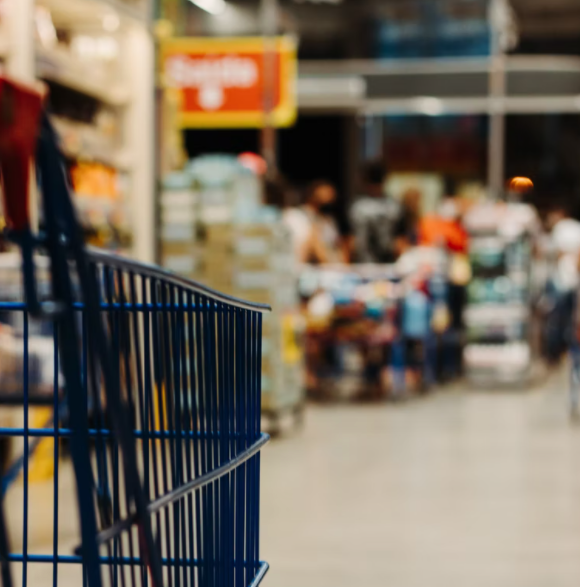
How to Better Manage Everyday Household Expenses to Fight the Impact of Inflation
Have you noticed that prices have gone up for groceries, eating out/take-out food, gas for your car, housing, and everything in-between? And maybe you’ve even noticed skrinkflation (where the pack/portion size shrinks or the quality declines while the price stays the same or increases) in the everyday goods and services that you buy?
According to Statistics Canada, in January 2022, Canadian inflation surpassed 5% for the first time in over 30 years. Prices for groceries increased at a faster pace in January 2022 compared with December 2021, representing the largest annual increase since May 2009. And if you typically buy meat or fish, you might have noticed even more dramatic price increases for these products compared to others at the grocery store. A range of issues is driving this inflation, including global supply chain disruptions, bad weather conditions in growing regions for agriculture, and pent-up demand for products during COVID.
In contrast, data from the Labour Force Survey indicates that wages increased 2.4% during the same period, leaving Canadians with less purchasing power since wages have not increased enough to offset inflation.
So what can your household do to better manage everyday expenses, and ideally without feeling a big difference in your lifestyle?
In this blog, we offer some suggestions for different categories of everyday household expenses.
Groceries
- Start with your pantry and freezer. Unless you’re one of the highly organized people who has categorized all your freezer and pantry items by date, chances are high that you have food that you’ve forgotten about. Try a challenge for one or two weeks (depending on how much food you have) where you shop your pantry and freezer first before you shop the store. Get creative and search up recipes using what you have on hand, and clear this out before taking out your wallet again. This is also a good practice to ensure the continuous freshness of your pantry and freezer basics through the rotation of old to new.
- Stock up on pantry basics and household essentials when they’re on sale. This is best done after you’ve cleared out your pantry and freezer, but it also applies to other household essentials such as toilet paper (but please no excess hoarding!), laundry/dish detergent, and household cleaning supplies.
- Buy in bulk with family and friends. Whether you’re shopping at a club store like Costco or stocking up on pantry basics when they’re on sale, consider splitting the items and the cost with family or friends. The big bag of 24 fresh dinner rolls from Costco may be a great deal (very low cost per roll), but can you finish the 24 rolls before they get stale, or is it a truly good idea to freeze them until they get freezer burn? With a little pre-planning with family and friends, you can cut down your spending while reducing waste and keeping a good variety of food on hand.
- Don’t go shopping when you’re hungry. Shop when you’re full and you’re less likely to buy extra snacks and items you don’t need. Save money and save your waistline.
- Cut back on meat. Since meat prices are among the highest of all grocery items, consider cutting back and experimenting with other plant-based proteins for some variety.
- Sign up for digital flyer apps to watch out for deals. Apps such as flipp and save.ca allow you to easily search local flyers in your area to find deals and make a shopping list. Just make sure you plan where you shop strategically or you’ll end up spending more time and money on gas driving around for the best deals.
- Buy store brands instead of national brands. The quality of many store brands has increased in quality over the last few years. Some store brands even have unique products or flavours not available in national brands. As you shop each grocery category, consider which ones you can switch for a store brand. A few cents or dollars per individual item can add up to meaningful savings on your total grocery bill, especially once you multiply that over several trips.
- Preplan your meals. If you know what you’re making for the next week, then you can make the best use of your pantry and freezer items and be on the lookout for deals for the ingredients you need. Shopping under pressure when you don’t know what you’re making tends to result in buying one-off ingredients you rarely use. You may also end up succumbing to buying convenience foods at higher prices.
Gas
- Plan your route. Do you need to shop at two or more different grocery stores to get everything you need? Maybe it’s part of your routine to do your grocery shopping on the weekends, but if one grocery store is on your kid’s daycare or school route, consider picking up groceries as part of this trip instead of trying to drive to two or more stores which may not be close to one another on another trip. Think about all the errands you need to do over the week and match similar routes together as much as possible to save on gas.
- Use apps to find the cheapest gas (but drive to them logically or you’ll burn more gas getting to them). Apps such as GasBuddy, Waze or if you’re a CAA member, list nearby gas stations and their prices. If you see a low price that’s on your route (even if it’s not your usual station close to home or work), consider filling up even if your tank isn’t yet near empty. If you wait until your gas indicator light comes on, you’ll likely end up paying more because you won’t have time to shop around for the best price.
- Take public transportation/carpool/bike. Do what you can to consider these options, which also have the benefit of being more environmentally friendly. Planning on going downtown on a family outing over the weekend? Taking public transit or cycling part of the way there can add to the experience for the kids while helping to cut costs and reduce your carbon footprint.
- Accelerate and decelerate gently. According to Canadadrives.ca, aggressive driving (too many quick accelerations, speed, or sudden braking) uses up about 35% more gas. Use your exercise workout as your outlet for frustration instead of the road and save money and minimize the risk of accidents.
- Don’t carry extra weight. Empty non-essential items from your truck to increase your gas mileage. Extra weight in your car means extra effort (gas) needed to move your car forward.
Eating Out/Take-Out Meals
The restaurant industry has been one of the hardest-hit throughout COVID and for many who have been fortunate enough to have kept their jobs or even thrived during COVID, supporting local restaurants is a worthy cause.
But if you were left with a bad feeling the last time you ordered take-out when you got a noticeably smaller portion of your “usual” dish from your favourite restaurant at a noticeably higher price, here’s what you can do.
-
- Reduce the frequency of eating out/take-out. Depending on how often you are dining out or ordering take-out/delivery, even a reduction by one time per week/month can make a big difference, especially if you’re a family of four or more.
- Make an easy appetizer or side dish to complement what you know will be a smaller portion for take-out/delivery. Yes, part of the reason for ordering food is to save time and energy from cooking. But if you still want to support local restaurants and you still enjoy the variety/treat of ordering meals that may be harder to make at home, there are many quick and easy appetizers you can prepare to make sure no one goes hungry.
- Mix up your dining choices with some lower cost options. If you typically order or dine in at more mid-price tier to upscale restaurants, then consider alternating some weeks with more value-priced choices. Some smaller restaurants serving authentic cuisines may have minimalist decor and service, but have ample menus with items to delight your palate.
By being more conscious about saving across one or more of these areas, you can help your household manage through this recent inflation without feeling a big impact.
And if you have a nanny or caregiver, NannyTax may be able to help you find cost savings through smart management and filing of your domestic payroll taxes that you didn’t realize were possible. Contact us today to find out how.










